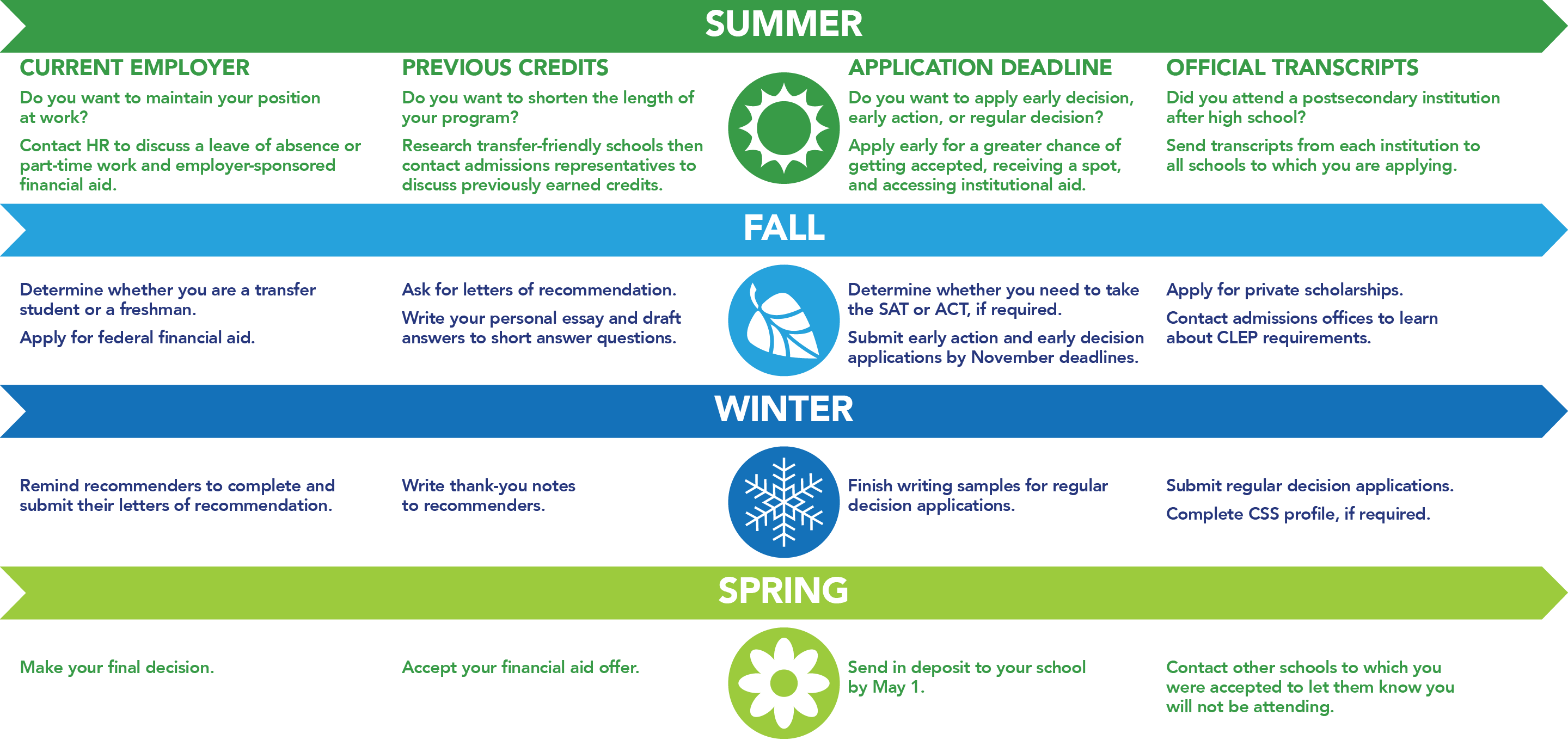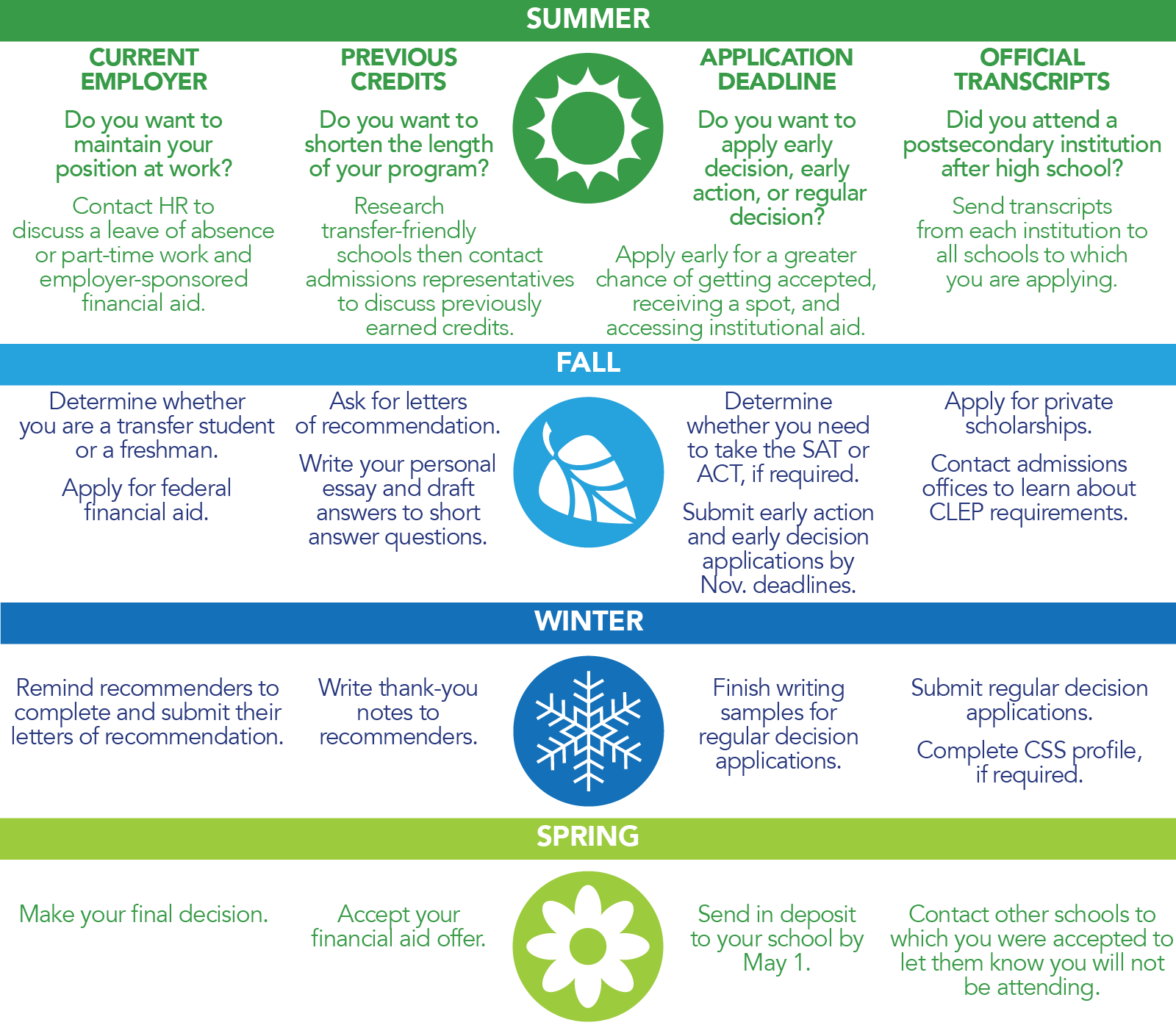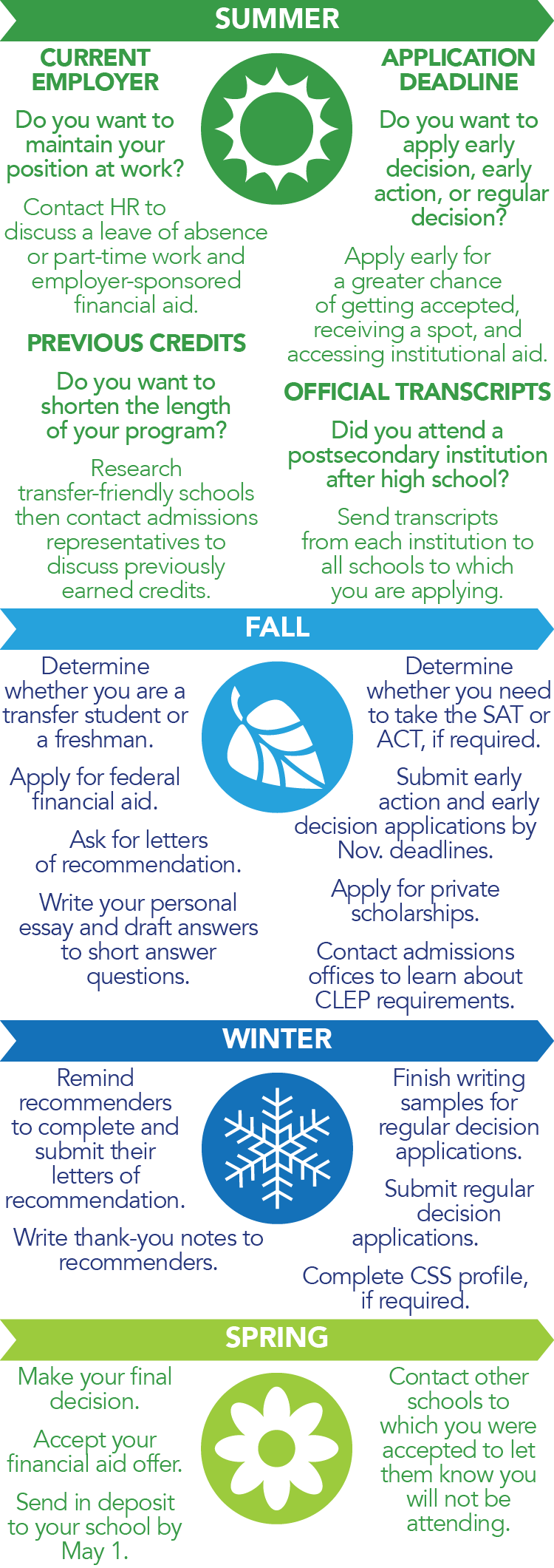Unlike high school students who may be planning for college throughout high school, returning or adult students may have less time to prepare for college admissions after making the decision to return to school. This section hosts a general college admissions timeline tailored to returning and adult students. Divided into seasons, it recommends actions you can take throughout the year to ensure you are a competitive applicant when it comes time to submit your application. Download this printable College Admissions Timeline if you prefer to have everything written down.
Explore the graphic below to get a general idea of your timeline. If you're looking for more detailed information or links to relevant articles, refer to the text below the graphic.



Summer:
- If you have a current employer and want to maintain your position at the company during or after completing your education, talk to an HR representative before you make the decision to return to school. Find out:
- If you can take a leave of absence
- If you can decrease your workload to part time
- If there is any employer-sponsored financial aid, and if so:
- If there are requirements about where you can go to school
- If there are requirements about the program or classes in which you enroll
- If you have previous postsecondary credits and would like to shorten the length of your program, research transfer-friendly schools to find institutions that are more likely to accept your credits.
- Talk with admissions representatives at all of your prospective schools about any credits you’ve already earned and any articulation agreements they might have with your previous institution.
- Determine when your application(s) will be due. Depending on the institution to which you are applying, your application may be due anywhere from November 1 to the middle of May. Decide if you want to apply early decision, early action, or regular decision.
- Some schools may also have rolling admissions, meaning that you can apply as long as there are places left in the incoming class. These spots fill up on a first-come, first-served basis. There is, therefore, an incentive to apply early; you have a greater chance of getting accepted, receiving a spot, and accessing institutional aid.
- Contact your high school and any previous postsecondary institutions you attended about your transcripts. Official transcripts (those sent directly from one institution to another) need to be mailed to all the schools to which you are applying. You may have to pay for this service.
- If you received an equivalency exam diploma, you may still have to send transcripts from your high school (if you attended) to show how you did on the courses you completed.
Fall:
- If you attended college after graduating from high school, you may have to apply as a transfer applicant. If this will be your first attempt at postsecondary education, you will apply as a freshman applicant. Check with your prospective institution to determine which application to submit.
- Apply for federal financial aid. The FAFSA opens on October 1 each year.
- Ask for letters of recommendation.
- Your best bet for a great recommendation letter would be to ask an employer, a previous postsecondary professor, or a high school teacher (if you’re not too far removed). Generally, you should choose someone who is intimately familiar with your desire to return to school, knows why you want to return, and knows your academic abilities.
- Begin writing your personal essay and drafting your answers to short answer questions.
- Register and take the SAT or the ACT if standardized test scores are required by your institution.
- While SAT and ACT scores never expire, you may find that colleges are hesitant to accept scores over five years old since the tests change frequently.
- If you decide to retake the SAT or ACT and are over the age of 21, you must bring a government-issued photo ID on test day (e.g., driver’s license, passport, or military ID).
- October is the last month you can take standardized tests if you want your scores to be associated with early admissions applications; the registration deadline for each test is generally in September.
- Submit early action and early decision applications by their November deadlines.
- Apply for private scholarships for adult students.
- Register and take CLEP tests if you hope to earn college credit from previous life experiences. Not all schools accept CLEP results, however. Check with the admissions office at your prospective institution to learn about its requirements.
Winter:
- Remind your recommenders to complete and submit their letters of recommendation if they haven’t already.
- Write thank-you notes to your recommenders.
- Finish your writing samples for regular decision applications.
- Complete and submit regular decision applications.
- Complete the CSS Profile if it is required by your institution.
Spring:
- Make your final decision.
- Accept your financial aid offer.
- Send a deposit to the school you will be attending by May 1.
- Contact any other schools to which you were accepted and let them know you will not be attending.
Page last updated: 05/2019


